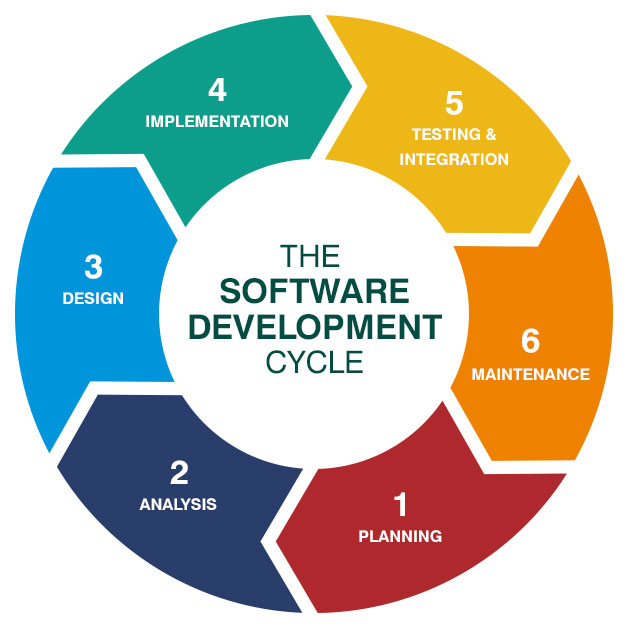
Software Development Methodologies
A software development methodology is a set of processes used in the software development process. It is quite broad, but it typically includes like a design phase and a development phase. It is designed to describe the how of the life cycle of developing software.
There are numerous methods for organizing the development and writing of code. Although it is impossible to recommend one path over another, there is much to be learned from each one. Developers have a wide range of software development methodologies to choose from.
Typical software development methods are as following.
(1) Waterfall Model
The Waterfall model is the first of the software project development models that have been introduced in the software development circles. It relies on a set sequence of steps. Developmental stages are defined in a strict, sequential order and never moving forward until the current stage has bee completed. Because project scope, cost, and human resource management are relatively easy to perform, this model is often used in large-scale development. On the other hand, requirement specification change or an error is occurred in the phase, it may significantly increase the load of rework.
(2) Prototyping Model
Prototyping model is a development model which is used when customers do not know the exact project requirements beforehand. In this model, a prototype of the end product is created, tested, and refined based on customer feedback until a final acceptable prototype is achieved, which serves as the foundation for developing the final product.
In this process model, the system is partially implemented prior to or during the analysis phase, allowing customers to see the product early in its life cycle. The process begins with customer interviews and the creation of an incomplete high-level paper model. This document is used to create the initial prototype, which will only support the basic functionality requested by the customer. Once the customer has identified the issues, the prototype is refined to eliminate them. The process is repeated until the user approves the prototype and is satisfied with the working model.
(3) Iterative and Incremental Model
The Iterative model begins with the implementation of several small requirements, and then the product is improved through numerous iterations (incrementally). The enhancement process is repeated in increments (iterations) until the application's features are complete and ready for deployment.
Developing only a small portion of the software is a wise strategy because you can easily review what was done, quickly identify additional requirements, and proceed with the implementation or make some changes to the project and then proceed. In any case, you will benefit from the solutions because each iteration will bring you a new and improved version of the software.
(4) Spiral Model
The Spiral Model is combined with the Iterative and Waterfall model. Cycled development was borrowed from the Iterative methodology, and a systematic approach and the ability to control the process was borrowed from the Waterfall methodology. The current model places the greatest emphasis on risk analysis. It also delivers projects in iterations that swirl around the spiral.
(5) Agile Model
Agile methodology is based on an iterative and incremental model, but it is more adaptable and produces working software quickly. The Agile methodology brings customer satisfaction because it meets the client's requirements and is very flexible. Agile projects typically divide the production process into incremental builds, which we refer to as iterations. Every iteration lasts 1 to 3 weeks and involves multiple teams working on different project areas at the same time. This allows for a reduction in production time and may also result in lower production costs.